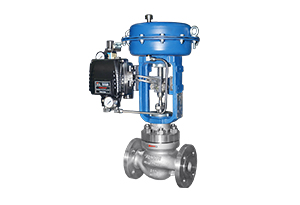Jul. 13, 2020
Regulating valve is the terminal execution element in the industrial process control system. Industrial process continuous production automatic control system generally requires regulating valve to control various process parameters in process production to achieve the pressure and temperature of the fluid The adjustment of parameters such as flow rate, liquid level, and liquid level is often called "hands and feet" in industrial process automation production. Its application quality is directly reflected in the regulation quality of the system. As a terminal executive component in process control, people have a deeper understanding of its importance than in the past. Whether the application of the control valve is good or not, in addition to product quality and whether the user is correctly installed, used and maintained, it is very important to correctly calculate the type selection. Due to errors in calculation and selection, the system operation is unstable, and there are many examples that are even unavailable. Therefore, users and system designers must fully realize the importance of regulating valves in the field and must pay enough attention to the selection of regulating valves.
The general principle of the selection of the control valve is: on the premise of satisfying the use function, the selected control valve should be simple in structure, reliable in performance, low in price, long in life, and easy to maintain. Single seat regulating valve manufacturer introduces the choice of regulating valve type and the choice of accessories.
1 Selection of control valve type
There are many classification methods for control valves. At present, a classification method commonly used in China and internationally is divided according to structure, principle, and function. There are 9 categories in total, namely straight through the single-seat control valve, straight through the double-seat control valve, sleeve adjustment Valves, angle regulating valves, three-way regulating valves, diaphragm valves, butterfly valves, ball valves, and eccentric rotary valves, these nine types of products are the most basic and common products, usually also called standard products, others are combined with reality on this basis The improved application is called special product.

Single Seated Regulating Valve
1.1 Features and correct selection of standard type regulating valve
1.1.1 Straight through a single-seat regulating valve
Single seated regulating valve has only one valve core and one valve seat, which is easy to achieve strict sealing. It can adopt a metal-to-metal hard seal, or metal-to-PTFE or another composite soft seal, standard The leakage is 0.01%C (C is the rated flow coefficient), the allowable pressure difference is small, and the flow capacity is small. For example, the allowable pressure difference of the DN100 single-seat control valve is the only 120kPa, and the flow capacity is only 100. The flow path is complicated and the structure is simple. It is suitable for occasions with clean media with strict leakage requirements and small working pressure difference. However, small-sized regulating valves can also be used on occasions with large differential pressure. It is one of the most widely used regulating valves. After the further design, it can be used as a shut-off valve. The shape of the spool determines the flow characteristics. After being washed, the original characteristics are lost. The flow characteristics can be changed by replacing the spool. However, the fluid medium has a large thrust on the valve core, that is, the unbalanced force is large, and an actuator with a large thrust is required. Therefore, it is not suitable to use this type of regulating valve in applications with a high-pressure difference and large diameter. When selecting this valve, special attention should be paid to check the pressure difference to prevent it from being pushed open.
Headquarter Add.: SUPCON Park, No.309 Liuhe Road, Binjiang District, Hangzhou, 310053, China.
Tel.: +86 571 8111 9774
Fax: +86 571 8111 9737
E-mail: [email protected]
